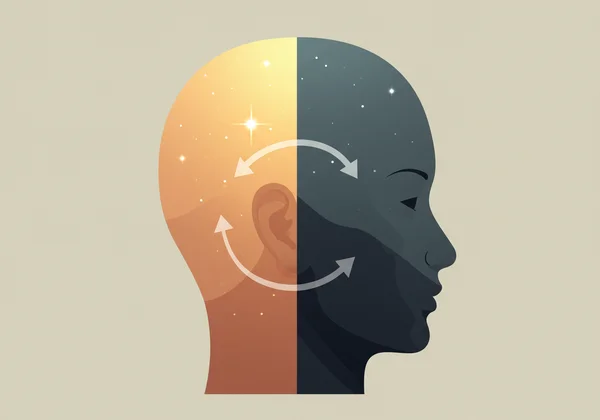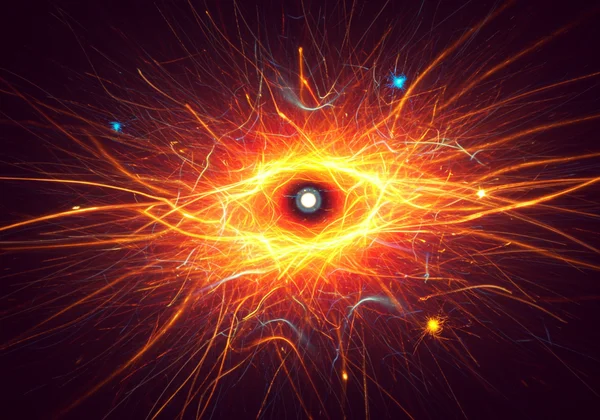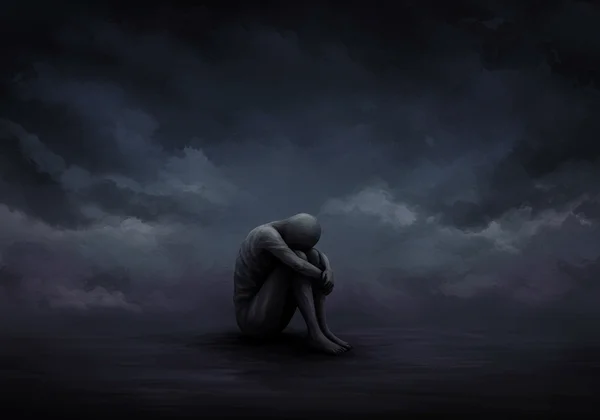Bipolar Disorder Symptoms & Test Guide: Understanding the Signs
Do your moods swing wildly, leaving you confused and wondering if something more is at play? Many people experience mood changes, but for some, these shifts might signal bipolar disorder symptoms. Here, we'll help you understand the distinct signs of bipolar disorder, from the highs of mania to the lows of depression, so you can better identify potential patterns and consider your next steps. Is there a test for bipolar disorder? Yes, there are screening tools available to help you gain initial insights into your mood swings and explore if your experiences align with common indicators of bipolar disorder. Taking a confidential online bipolar disorder test can be a helpful first step on your mental health journey.

Understanding Manic and Hypomanic Episodes
Bipolar disorder is characterized by significant shifts in mood, energy, activity levels, and concentration. The "highs" are known as manic or hypomanic episodes. It's important to understand these manic episode symptoms to recognize the disorder.
The Hallmarks of Mania: What Does It Feel Like?
A manic episode is an elevated mood state that is distinct and lasts for at least one week, or less if hospitalization is required. During this time, a person might experience intense energy, racing thoughts, and a decreased need for sleep. They may feel unusually upbeat, wired, or irritable. Grandiose ideas, where one believes they have special abilities or importance, are also common hallmarks of mania. Impulsive behaviors, such as reckless spending, risky sexual activity, or rapid-fire speech, can emerge. These symptoms are often severe enough to cause significant problems in daily life, leading to difficulties at work, school, or in relationships, and may require hospitalization. If you're observing these patterns, a bipolar screening questionnaire can help provide initial clarity.

What is Hypomania? Key Differences and Similarities
What is hypomania? Hypomania is a milder form of mania. While it shares many of the same symptoms—increased energy, decreased need for sleep, elevated mood, and talkativeness—these symptoms are less severe and typically do not lead to significant functional impairment or require hospitalization. People experiencing hypomania might feel highly productive, creative, and confident, often leading them and others to perceive these periods positively, at least initially. However, hypomanic episodes can still disrupt a person's life and, crucially, can escalate into full-blown manic episodes or be followed by depressive episodes. Recognizing the subtle distinctions is key to understanding the full spectrum of signs of bipolar.
Recognizing Bipolar Depressive Episodes
While the highs are notable, the lows are equally impactful. Bipolar depression refers to the depressive episodes experienced in bipolar disorder, which are often profoundly debilitating.
How Bipolar Depression Differs from Major Depression
While many symptoms overlap with major depressive disorder, bipolar depression has certain characteristics that can set it apart. People with bipolar depression often experience profound fatigue, excessive sleeping (hypersomnia), increased appetite, and psychomotor retardation (slowed movements and thoughts). They might also feel a sense of overwhelming hopelessness, guilt, and irritability that is deeper than typical major depression. The presence of a history of manic or hypomanic episodes is the defining factor that differentiates bipolar depression from unipolar major depression. This cyclical nature truly makes the experience of bipolar depression unique.
Common Symptoms of Bipolar Depression to Watch For
The depressive phase can last for weeks or even months. During this time, individuals may experience persistent sadness, a loss of interest or pleasure in nearly all activities (anhedonia), and significant changes in appetite or sleep patterns. Feelings of worthlessness or excessive guilt are common, as are difficulties with concentration and indecisiveness. Thoughts of death or suicide can also occur. These are critical symptoms to watch for and should prompt immediate attention. Understanding these low periods is as vital as recognizing the manic states when considering a bipolar disorder diagnosis test. For a quick, confidential way to assess potential patterns, consider a free bipolar disorder test.

Beyond Episodes: Other Common Signs of Bipolar Disorder
Bipolar disorder isn't just about distinct manic/hypomanic and depressive episodes. There are other presentations and general signs of bipolar that contribute to its complex picture.
Rapid Cycling and Mixed Features: More Complex Presentations
Some individuals with bipolar disorder experience what is known as rapid cycling, which means having four or more mood episodes (manic, hypomanic, or depressive) within a 12-month period. These shifts can be particularly challenging and unpredictable. Another complex presentation involves mixed features, where symptoms of both mania/hypomania and depression occur simultaneously or in rapid succession. For example, a person might experience racing thoughts and increased energy (manic features) alongside profound sadness and suicidal ideation (depressive features) at the same time. These presentations highlight the diverse ways bipolar disorder symptoms can manifest.
The Impact of Bipolar Symptoms on Daily Life and Relationships
The unpredictable nature of bipolar disorder symptoms can have a profound impact on daily life and relationships. During manic episodes, impulsive decisions can lead to financial trouble or strained personal connections. During depressive episodes, a person may withdraw from friends and family, struggle to maintain employment, or neglect personal hygiene. The constant shifts can be exhausting for the individual and confusing for those around them. This is why early recognition and seeking support are so important. Understanding these broader impacts emphasizes the need for accurate self-assessment tools. If you're looking for an objective starting point, consider taking an online bipolar disorder self-assessment.
Your Next Steps in Understanding Potential Bipolar Disorder Symptoms
Understanding bipolar disorder symptoms can be a significant step towards clarity and getting the support you need. It's completely normal to feel overwhelmed or confused by intense mood shifts. Keep in mind, self-screening tools offer initial insights, not a diagnosis. They're here to help you identify patterns and give you a clearer way to talk about your experiences with a healthcare professional.
If what you’ve read resonates with your experiences, or if you're a concerned supporter looking for information, taking a confidential online bipolar disorder test can be incredibly beneficial. This platform offers a free, science-based self-screening tool inspired by established psychiatric assessments like the Mood Disorder Questionnaire (MDQ). It’s fast, private, and designed to help you explore your mood patterns. You can even choose to receive an optional AI-powered personalized report for deeper insights into your strengths, challenges, and actionable steps. Your mental well-being is important, and taking the first step towards understanding is a powerful act of self-care. Visit our site to start your self-screening today.

Frequently Asked Questions About Bipolar Disorder Symptoms
How do you get tested for bipolar disorder?
Getting tested for bipolar disorder typically involves a comprehensive evaluation by a mental health professional, such as a psychiatrist, psychologist, or licensed therapist. This evaluation will include a detailed clinical interview about your mood history, symptoms, family history, and any other relevant factors. While there's no single medical test like a blood test for diagnosis, online screening tools like our confidential assessment can provide a helpful preliminary bipolar disorder self test to guide your initial exploration of symptoms.
What are the 5 signs of bipolar?
While bipolar disorder presents uniquely in each individual, common 5 signs of bipolar (often including hypomania or mania and depression) typically encompass:
- Elevated or irritable mood: Periods of unusually high energy, euphoria, or extreme irritability.
- Increased activity and reduced need for sleep: Feeling restless, driven, and needing very little sleep without feeling tired.
- Racing thoughts and rapid speech: Thoughts moving quickly, making it hard to follow, and talking very fast.
- Depressive episodes: Periods of profound sadness, loss of interest, fatigue, and feelings of hopelessness.
- Impairment in functioning: Significant disruptions in work, school, or social life due to these mood changes. Recognizing these overarching patterns is key when considering a bipolar test.
What happens if bipolar is left untreated?
If bipolar disorder is left untreated, its symptoms can worsen over time and significantly impact a person's life. Untreated bipolar disorder can lead to severe mood episodes that become more frequent or intense, an increased risk of substance abuse, impaired relationships, job loss, financial difficulties, legal problems, and a higher risk of suicide. Early recognition and seeking professional help are crucial for managing the condition and improving quality of life. Using a free bipolar disorder test can be a great way to start seeking clarity.
Is there a test for bipolar disorder?
Yes, there are formal diagnostic tests conducted by mental health professionals. These involve extensive interviews, symptom checklists, and ruling out other conditions. For initial self-assessment, online bipolar disorder test tools are available, offering a confidential way to gauge if your experiences align with common bipolar disorder symptoms. These self-assessment tools, like ours, are based on established screening principles, serving as a valuable first step in your journey to understanding your mood patterns.
What is commonly mistaken for bipolar?
Several conditions can be commonly mistaken for bipolar disorder due to overlapping symptoms. These include major depressive disorder (especially if past hypomanic episodes are overlooked), generalized anxiety disorder, ADHD (attention-deficit/hyperactivity disorder), and borderline personality disorder. The key to differentiating these often lies in the specific pattern, duration, and severity of mood shifts, as well as the presence of distinct manic or hypomanic episodes. Consulting a mental health professional for a thorough evaluation is essential for an accurate diagnosis. For an initial comparison of your experiences against common signs of bipolar, consider taking our confidential online assessment.
Disclaimer: This article is for informational purposes only and does not provide medical advice. It is not a substitute for professional medical advice, diagnosis, or treatment. Always seek the advice of a qualified healthcare professional for any questions you may have regarding a medical condition or mental health concern.